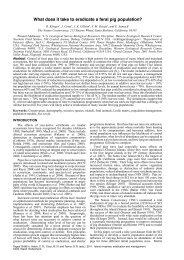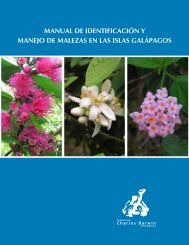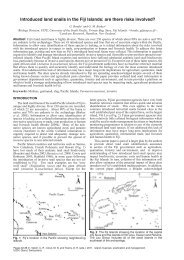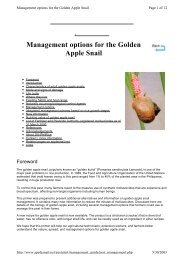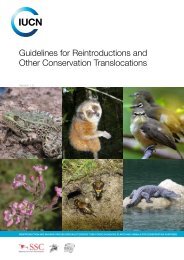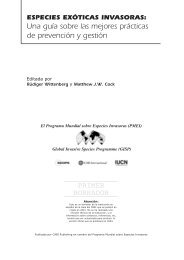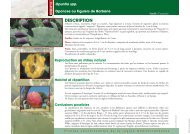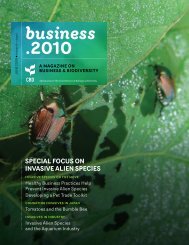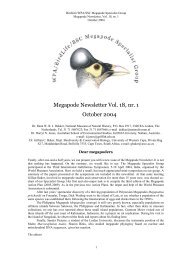Woody Invasive Species: A Regional Assessment - IUCN Invasive ...
Woody Invasive Species: A Regional Assessment - IUCN Invasive ...
Woody Invasive Species: A Regional Assessment - IUCN Invasive ...
Create successful ePaper yourself
Turn your PDF publications into a flip-book with our unique Google optimized e-Paper software.
Vielle IAS Management Priorities for Seychelles<br />
Carlstrom further states that Island communities are more likely to lose species from<br />
invasive exotic plant species than are analogous mainland areas. The exotic species may<br />
displace indigenous species through competition, or reduce biodiversity through the<br />
altering of the physical environment, increased erosion and perhaps the disruptive effects<br />
on nutrient recycling. The survival of many of the indigenous species probably hinges on<br />
the active control of the most aggressive alien species and this is where the management<br />
priority for invasive plant species in Seychelles lies.<br />
In this article I will not summarise the results of the FAO survey for the Seychelles<br />
(Kueffer and Vos this volume) but will interpret it by giving representative examples.<br />
Three types of insights can be expected from the regional survey:<br />
1. New ideas<br />
2. Learning from experiences made by others, and<br />
3. A bird-eye view of the involved issues that allows to set priorities<br />
Learning from the experiences of others will help to avoid mistakes. The setting of<br />
priorities assures that energy and resources are invested where it is most efficient.<br />
However, a regional survey cannot provide ready-made solutions for application.<br />
Therefore the subtitle of my presentations reads as ‘a basis for discussions’. I present<br />
examples but not final answers. At the end of my presentation as well as of today’s<br />
presentation we will have time here in the audience to start discussions and to start work<br />
towards future solutions of the invasive species problem in the Seychelles.<br />
My presentation is divided into two parts. First, I take a plant-species perspective and<br />
discuss the management of single species in parallel to the management steps scheme<br />
introduced by Christoph & Pierre in their presentation (Kueffer and Vos this volume)<br />
namely:<br />
1. Priority <strong>Species</strong> for Control Measures<br />
2. Priority <strong>Species</strong> for Close Monitoring<br />
3. Priority <strong>Species</strong> for Border Control<br />
I present examples not complete lists of species to illustrate the concepts.<br />
Secondly I will discuss possible milestones for the control of invasive species in the<br />
short, mid and long-terms.<br />
Priority species for control measures<br />
This refers to species that should be controlled by mechanical or chemical control in the<br />
field, are chosen according to the following three criteria:<br />
1. negative impact on biodiversity<br />
2. feasibility of control (that is abundance and stage of invasion) and<br />
3. visibility<br />
I present several examples.<br />
100



